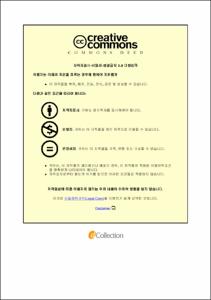A Resource-Based View of Competitive Advantages: Comparison Between the Port of Tanjung Priok Indonesia and Port of Singapore
- Abstract
- The development of the global supply chain sector demands the Port's quality to become an international hub-port. IPC in Indonesia is a major national and international port that serves as the gateway for national and international economic connectivity that serves as the national development's backbone. At the same time, PSA is one of the busiest and best international hub-port globally, which is a model for other ports around it. The previous study only compares the port performance indicator (PPI) between both; there is no comparison of the resources owned by these two ports. It is difficult for IPC management to identify which resources should be maximized to become an international hub port with a competitive position, such as the Port of Singapore. Using the RBV method, we Compared resources PSA and IPC then analyze and find out what resources and factors make PSA become one of the best international hub Port and make it in a competitive position to analyze what strategies IPC can apply to become an international hub port. We found that the unique combination of initial resources (port location, natural harbor) and additional resources (capital, IT, human resources skills) is the key to Port of Singapore's success in achieving a competitive position. At the same time, IPC already has the characteristics of an international hub port that is quite profitable, starting from a strategic location, protected natural harbor, and an adequate level of foreign investment. However, there are several obstacles for the IPC to lag behind PSA. We expect this study to be used to reference the IPC's authority as the main Port in Indonesia to carry its services to the international hub port. IPC must take advantage of natural/initial resources, a strategic location by building additional resources as a compliment.
- Issued Date
- 2021
- Awarded Date
- 2021. 8
- Type
- Dissertation
- Keyword
- RBV international hub-port IPC PSA
- Publisher
- 부경대학교
- Affiliation
- 부경대학교 기술경영전문대학원
- Department
- 기술경영전문대학원 기술경영학과
- Advisor
- Dongphil Chun
- Table Of Contents
- CHAPTER 1 1
Introduction 1
CHAPTER 2 7
Literature Review 7
2.1 An Overview of Resource-Based View (RBV) 7
2.2 Competitive Advantages of Seaport 9
2.3 Related Studies 13
CHAPTER 3 16
Research Methodology 16
CHAPTER 4 18
Overview of Cases 18
4.1 Port of Tanjung Priok Indonesia 18
4.2 Port of Singapore 30
CHAPTER 5 35
RBV Analyzing 35
5.1 Resource at the Port 35
5.2 Operation at the Port 39
5.3 Support Features 45
5.4 Innovation in Information and Operation Technology 51
5.5 Key Performance Data 55
5.6 The Analysis 60
CHAPTER 6 66
Conclusion 66
REFERENCE 71
Acknowledgements 77
- Degree
- Master
- Files in This Item:
-
-
Download
 A Resource-Based View of Competitive Advantages: Comparison Between the Port of Tanjung Priok Indone.pdf
기타 데이터 / 1.22 MB / Adobe PDF
A Resource-Based View of Competitive Advantages: Comparison Between the Port of Tanjung Priok Indone.pdf
기타 데이터 / 1.22 MB / Adobe PDF
-
Items in Repository are protected by copyright, with all rights reserved, unless otherwise indicated.